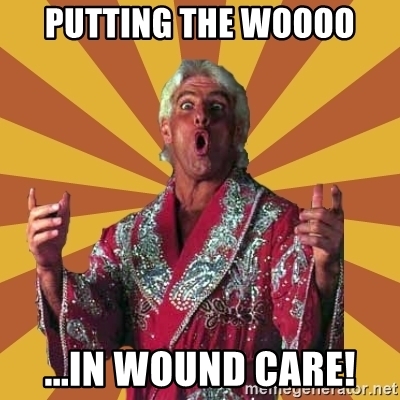17 Sep 2020
ECT4Health - Wound Care Today

Have you got TIME to assess your patient’s wound?
Wound assessment is one of those tasks in nursing you either hate or love. Few would deny that there is a feeling of accomplishment from seeing a long term ulcer heal, but some wounds just seem to be resistant to progress.
I thought I’d go back to the start and discuss one easy system to assess the wound. Only after assessment, can we plan our cleaning, and dressing strategy. One system I use is called TIME.
TIME stands for Tissue - Infection - Moisture - Edges
T is for Tissue: The biggest component of your wound assessment
Assess the wound and the surrounding skin for their viability. Is the wound, and its base pink, and looks to have a good blood supply, or is it yellow and sloughy? Is there pus or eschar (that black/brown dry crusty nastiness in the base?
Size of a wound (like burns) is twofold, depth and area. With depth, you’re recognising how many of the skin’s layers are affected. Is this wound just into the upper layers (epidermis) or deep into the bleedy bits? We grade these superficial if involving only the epidermis, and shallow or deep Partial thickness when into the dermis. If you see fat, muscle, bone or exposed connective tissues in the wound, then it is full thickness, and needs a more comprehensive approach. Full thickness wounds (we used to call them 3rd degree) often need flaps, or skin grafting. They take months to heal and are beyond the scope of a dressing alone.
When measuring the size, photos are a great reference tool. Of course you need permission, and a way to print the image for the patient’s notes. You can measure using a small disposable ruler, or a piece of Gauze from the dressing tray (exactly 7.5cm) as a guide. In one wound centre we overlayed a piece of opsite film and drew an outline of the wound margin on it with a sharpie type marker. There are many ways you can think of to measure the area, but most importantly, record the longest length, and the widest width.
Finally with T, is cavity search. Not a cavity search, but a search for a cavity, like a sinus, or fistula that undermines the wound margin. Sinus form in wounds from pockets of bacteria and exudate being trapped in a spot, stopping the tissue regenerating, and being perfused. As time goes on the area breaks down and a hole (cavity) forms harbouring bacteria colonies that can repeatedly reinfect the wound if not being cleaned out regularly.
So that is T for Tissue….more?
Well consider coming to our 5 part wound seminar online. We unpack the rest of the TIME mnemonic, discuss infection, and exudate and wound moisture, surrounding skin care, nutrition, and even look at comorbidities and medication. We go into acute and chronic wounds, wound adjuncts, advanced assessments, grading ulcers, dressing choice and of course maggots, honey, silver and all things medieval. Into the 21st century, we will look at APBI, transcutaneous oximetry, Hyperbarics and the use of Biofilm obliterators (don’t google that, it’s my own term)
Seriously, 7CPD you don’t want to miss.

